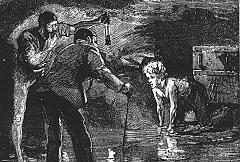THE ROYAL SCHOOL OF MINES

After leaving the Navy, Huxley entered the British scientific world by spending several years writing science articles which won him respect among other highly recognized scientists. His literary efforts and the influence of other scientists resulted in his election to the esteemed Royal Society.
In 1854, Huxley’s career continued at the Royal School of Mines where he was appointed professor of natural history; a position he chaired for thirty-one years. This was the beginning of his studies in paleontology and geology. Huxley admits to not being a naturalist. In his younger years, his desire was to be a mechanical engineer, but as we all know, the cards dealt to him took him into the field of medicine.
The art of healing of the medical field did not interest Huxley as much as in physiology, which he saw as the mechanical engineering of living machines. Huxley’s interest truly lied in the architectural and engineering of living constructions. He had an extraordinary attraction for the study of the intricacies of living structures.[4]
Prior to Darwinism, the approach taken by naturalist in studying vertebrate paleontology was to collect, identify and classify species. Huxley took a different approach in his vertebrate paleontology works; he worked to reveal the relationship between groups. An example of this would be his study of fossil reptiles which led to the similarity and kinship of birds and reptiles; as a result the two were united under the title of Sauropsida. Huxley’s revealing the relationship between groups gave credit to the evolution theory.
Katheryn M. Auton
Joshua Withers
| 

